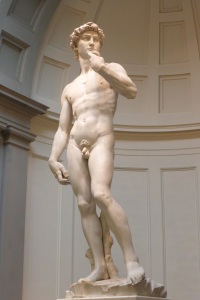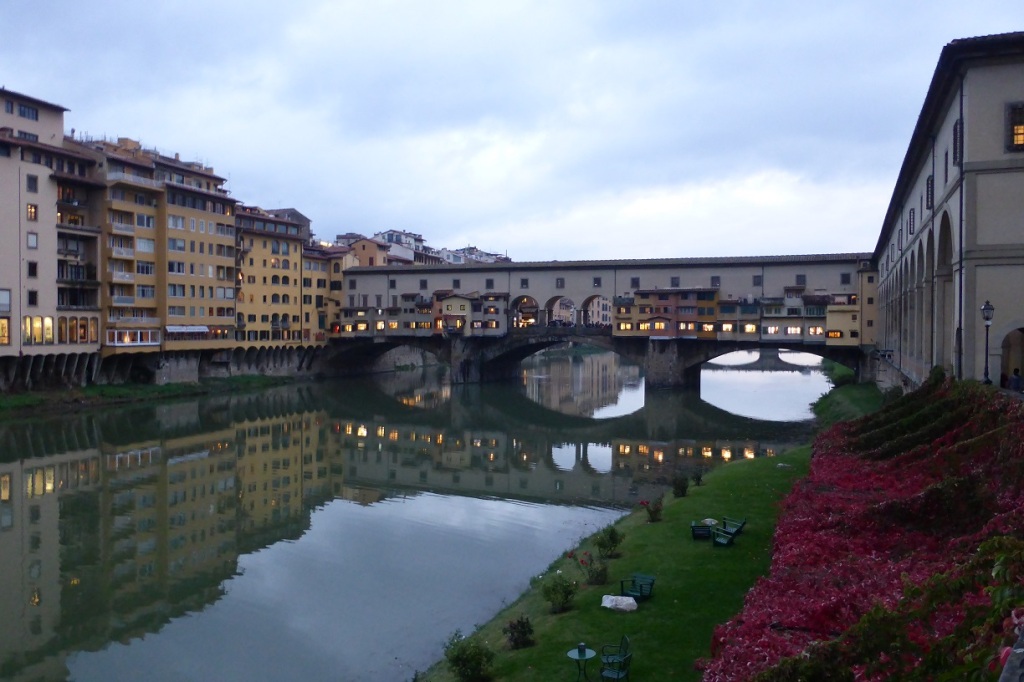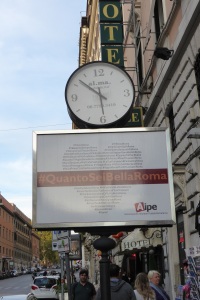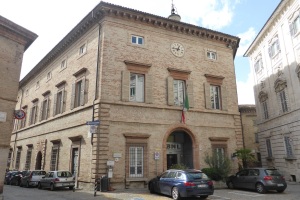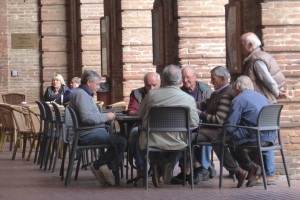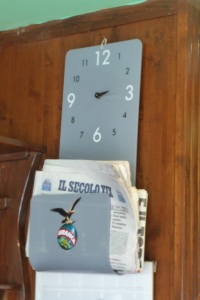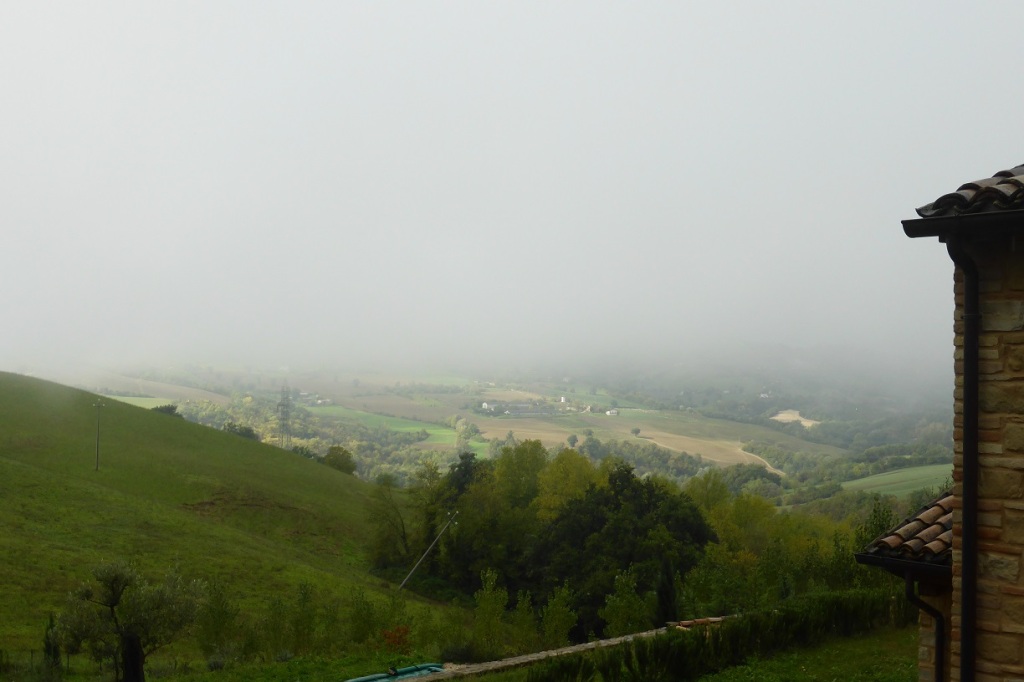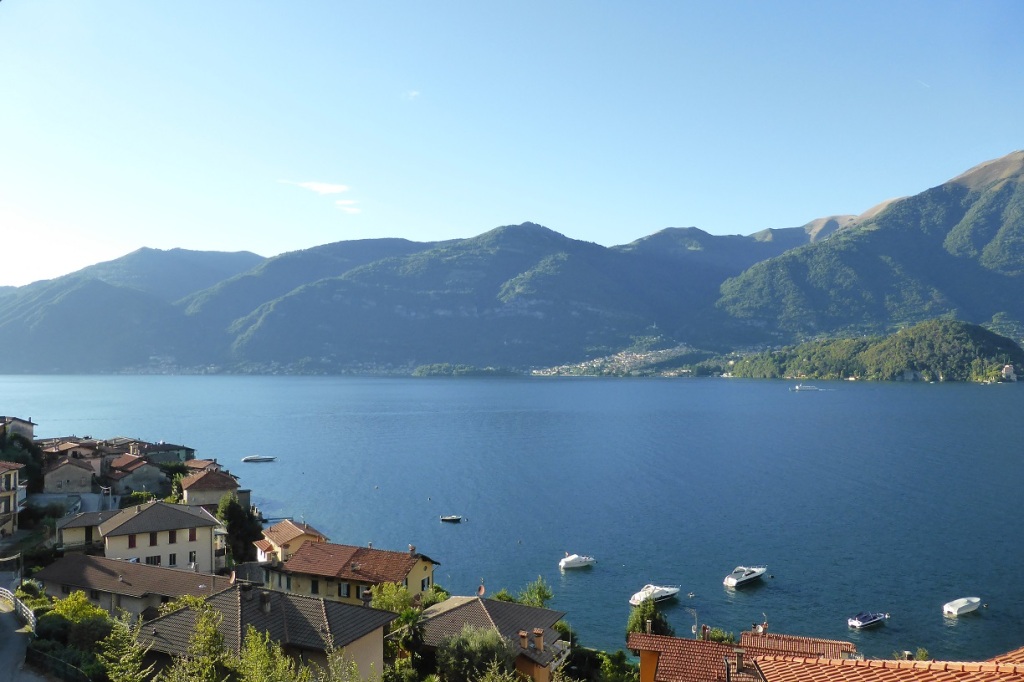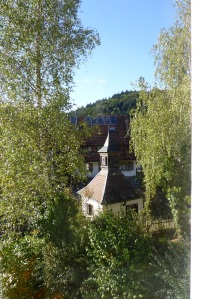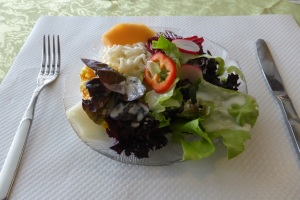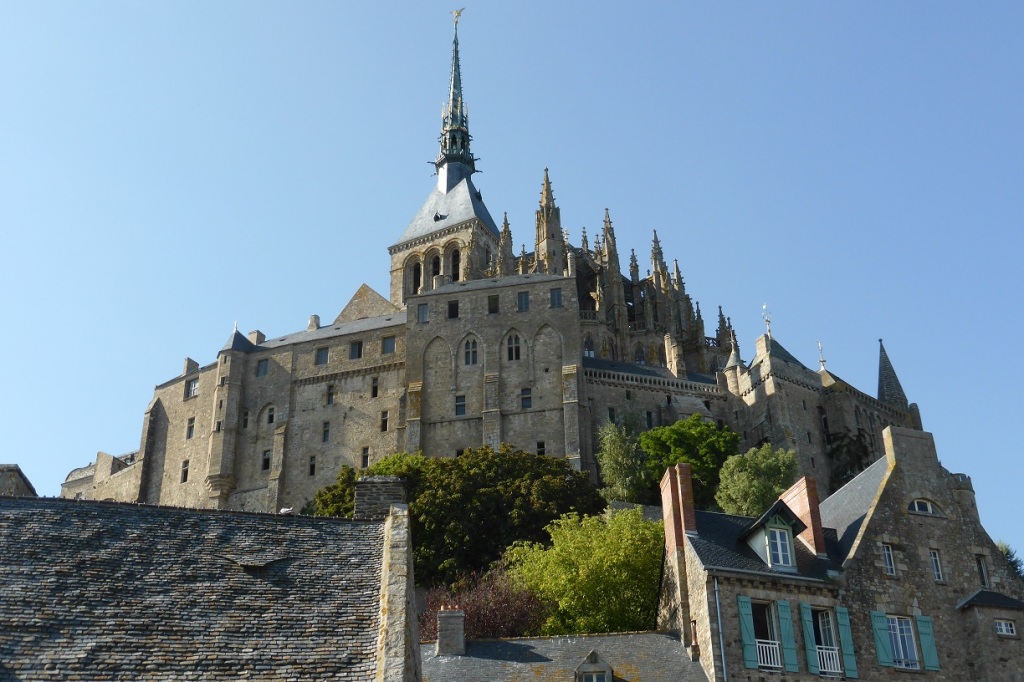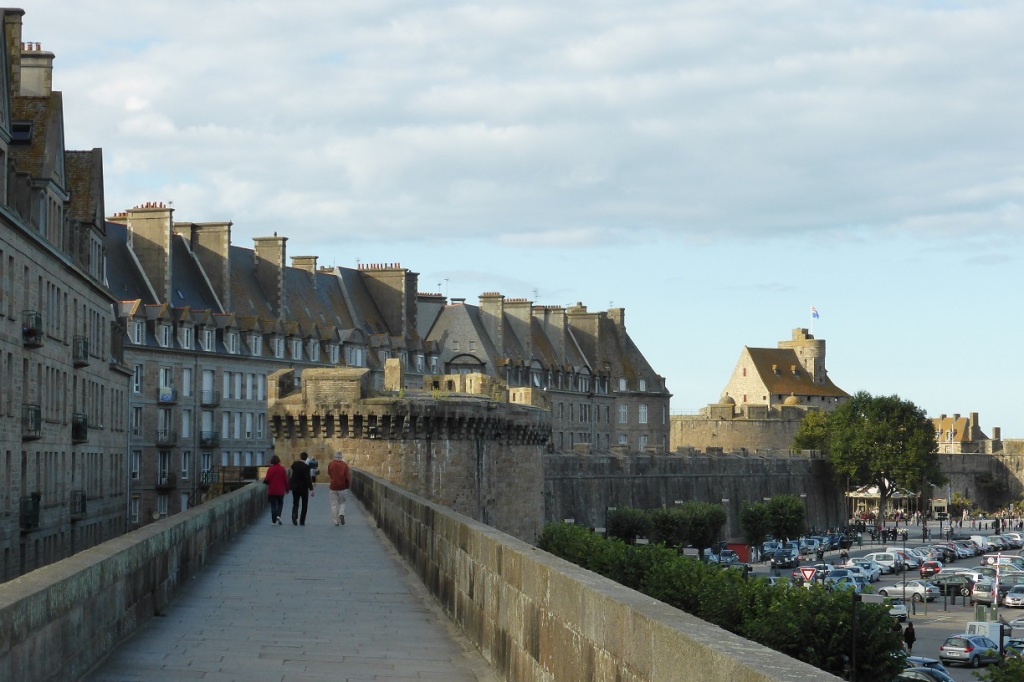Day #126 saw us leave our previous accommodation at Malsburg-Marzell and continue on our south-easterly direction towards Lucerne in Switzerland.
First up was a brief stop in Lörrach, a small town right on the German-Swiss border for a coffee, a stretch of the legs, and to refuel the car before entering expensive Switzerland. It’s a pretty town with a pretty square, and the cafe where we ate had these nifty tables.
Morag also picked up a couple of books from a man with a stall in the square. She noticed he had a copy of Wolf Hall in English and as she had meant to read it ages ago picked it up. The book seller was so excited he produced all six English language books he had in stock and was very pleased when we walked away having bought 4 of them.
At the border, we diverted by Swiss border control to buy a vignette (permit) to drive on Swiss motorways for 40 Swiss Francs (CHF). You can drive through Switzerland without using the motorways, it just takes a lot longer. It is also possible to drive on the motorways without a vignette, it just attracts a 200CHF fine, plus the cost of a vignette. We were grateful to Nigel and Helen from Malsburg-Marzell for warning us. Nigel was a touchy about this: Germans don’t pay to drive on motorways! The permit is 40 CHF per calendar year no matter when in the year you buy it, is not transferable between vehicles and once place on the windscreen must not be moved. Dean peeled the back off our under the instruction of a stern Swiss guard and the thing stuck itself to not the most convenient spot and that is where it had to stay.
Lucerne was only a little over an hour from the border, so we headed straight for the tourist information office located at the main railway station, with lunch first at the adjoining culture centre. Lucerne looked truly wonderful in such perfect weather – it was a shame that we wasted it traveling!
As an astute reader will have noted, our B&Bs are often outside our actually destination, and this was no exception: our B&B was located at Zug, about 30 minutes drive away from Lucerne. Or so we thought. After some confusion which included trying to decipher driving instructions that were in Swiss-German (one of the terms was god fearing), we discovered that our accommodation was actually at Zugerberg, a mountain overlooking Zug and Lake Zug. The Zugerbergbahn funicular connects the Zugerberg to Zug, with the upper station at 925 metres, but we drove up the god fearing road! This was the view when we finally got there.
Who would have thought! It sure beat staying in Lucerne – as nice as that city is – hands down! Our BnB stay was with Kalina in a flat over the top of the funicular station.
Day #127 say us up uncharacteristically early, as we had pre-arranged a walking tour of Lucerne that started at 9:30, and it was going to take a while to get there. Faced with the god fearing road, we elected to take public transport to Lucerne, and were supprised to find that we could purchase a single ticket covering the Zugerbergbahn, Zug local bus and Swiss Rail to Lucerne.
Swiss Rail was expectedly efficient, as was our tour guide who showed us the delights of central Lucerne.
The following are a couple of highlights.
 The octagonal Wasserturm (Water Tower), built around 1300, with the Kapellbrücke (Chapel Bridge), built in the14 century, behind. Both formed part of the cities fortifications.
The octagonal Wasserturm (Water Tower), built around 1300, with the Kapellbrücke (Chapel Bridge), built in the14 century, behind. Both formed part of the cities fortifications.
 The Nadelwehr (Needle Dam), built in 1859 to manually regulate the level of Lake Lucerne by the insertion or removal of wooden “needles”, is still used today. In the background, to the left, is the Spreuerbrücke (Chaff Bridge), built in 1408, which contains an extensive series of macabre paintings from the 1600’s, used to remind the illiterate locals of the time of their impermanent existence (this one is #32).
The Nadelwehr (Needle Dam), built in 1859 to manually regulate the level of Lake Lucerne by the insertion or removal of wooden “needles”, is still used today. In the background, to the left, is the Spreuerbrücke (Chaff Bridge), built in 1408, which contains an extensive series of macabre paintings from the 1600’s, used to remind the illiterate locals of the time of their impermanent existence (this one is #32).
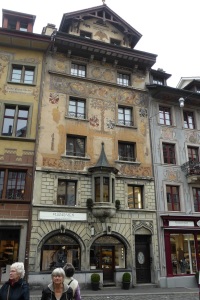 One of the beautifully decorated buildings of the Weinmarkt (Wine Market). Lake Lucerne is a very clean body of water fed from mountain springs and snow from the Alps. Our guide pointed out some of the many (over 200) fountains dotted around Lucerne and said all were fed from mountain springs and the water was safe to drink so there was never a reason to buy bottled water in Lucerne as you can fill yur wter bottle on almost every corner.
One of the beautifully decorated buildings of the Weinmarkt (Wine Market). Lake Lucerne is a very clean body of water fed from mountain springs and snow from the Alps. Our guide pointed out some of the many (over 200) fountains dotted around Lucerne and said all were fed from mountain springs and the water was safe to drink so there was never a reason to buy bottled water in Lucerne as you can fill yur wter bottle on almost every corner.
It was lucky for us that the tour finished only slightly over-time, as we were able to scuttle off, grab some lunch, and meet up with our next tour to Mount Pilatus, or dragon mountain, which overlooks Lucerne and it’s lake. The tour took us:
- by tourist coach to the base station at Kriens;
- by a 25-minute cableway ride to Fräkmüntegg (4649ft);
- by a 10-minute gondola ride to Pilatus Kulm, the hotel at the top of Mount Pilatus (~6900 ft);
- by a 40-minute cogwheel railway ride (the world’s steepest);
- by a 50-minute cruise ship ride on Lake Lucerne.
We had time at Pilatus Kulm to eat lunch and enjoy the outstanding views, but sadly we had come on the wrong day (literally, we should have been there the day before), as the dragon had his head in the clouds. These were the gondola cables, disappearing into the clouds.
These were the gondola cables, disappearing into the clouds.
 This was Pilatus Kulm, itself clear of cloud, but unfortunately the views on both side were completely obscured. The picture was taken from Esel (6953ft), one of the summits of Mount Pilatus. In the background at the right, partially obscured by cloud, is Oberhaupt (6913ft), marked by a cross. Mount Pilatus was fantastic and well recommended, especially if the weather is clear!
This was Pilatus Kulm, itself clear of cloud, but unfortunately the views on both side were completely obscured. The picture was taken from Esel (6953ft), one of the summits of Mount Pilatus. In the background at the right, partially obscured by cloud, is Oberhaupt (6913ft), marked by a cross. Mount Pilatus was fantastic and well recommended, especially if the weather is clear!
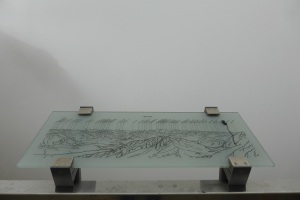 This was one of the outlook information boards, telling us all about what we might have seen.
This was one of the outlook information boards, telling us all about what we might have seen.
Given we had taken 3 types of transport to reach the top of Mount Pilatus imagine our astonishment to see a Vladamir Putin look-a-like striding up a rocky path to the mountain top. As we huddled, wrapped in our coats against the wind he appeared out of the clouds, bare chested with his shirt tucked into his belt, striding along looking very impressed with himself.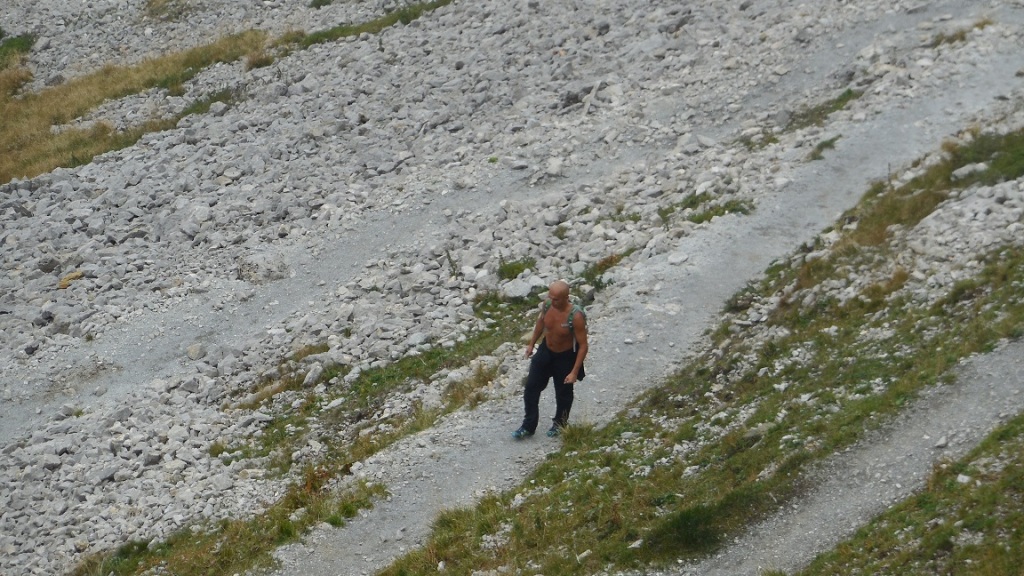
By the time we completed this tour, had dinner in Lucerne, then made our way back to Zugerberg by train, bus and funicular, we were a couple of very tired bunnies, and went straight to bed. For dinner we had thought we would have Fondue. What could be more Swiss than Fondue but were bemused to be told by a restaurateur that it wasn’t cold enough for Fondue but maybe the day after tomorrow they would start serving it. As it had only reached a chilly 11º that day we wondered how cold it had to be before the Swiss would serve melted cheese on bread and we wondered what was significant about “the day after tomorrow”. A quick google search revealed that day to be the Autumn Equinox and the official start of the Fondue season .
Lucerne is a very international city and you can hear accents from all over the world there, even Australians who are there working in banking and other industries. Zugerburg has a bilingual German/English school and many children attending have British, American, Australian accents.
On day #128, we repeated the trip back to Lucerne, but drove. All the tourist information says that it is hard and expensive to find car-parking in Lucerne, but we found neither of these to be true as there was plenty of space in the underground parking at the Bahnhof (central train station), and the cost of around €16 was considerably cheaper than public transport for two people from Zugerberg (over 40€ each), and possibly a tad more time-efficient.
Being a little bit tired from the previous day and again having to dodge showers, we had an easy day and only visited the Sammlung Rosengart, a public museum displaying the previously private collection of Angela Rosengart including Pablo Picasso (32 works) and Paul Klee (125 works), plus some others like Monet, Matisse, Cézanne, Renoir, Kandinsky. Again, it was a museum with a no-photography policy, so: no pictures for you.
The close of day #128 saw us successful in a search for a fondue for dinner. It seems some restaurants in Lucerne started serving early this item of traditional (and cheap!) Swiss cooking.
Day #129 had us departing Zugerberg to continue our adventure. The view from our B&B included Mount Pilatus, which had snow on it. It had snowed overnight on most of the high Alps leaving clear skies but the lower areas and lakes blanketed in morning clouds. That’s Pilatus on the left, and yes, it was cold that morning – I think it made 10° by midday.
That’s Pilatus on the left, and yes, it was cold that morning – I think it made 10° by midday.
On our way out, we thought we should spend a little time in Zug, so we had a wander around and stopped for morning tea at this cafe which was celebrating 100 years of the Zuger Kirchtorte.
It took us a little while to understand that this was a kirsche torte, and that kirsche was the product of Zug. Who would have guessed?
That’s the Zuger Kirschtorte on the table, and the menu that Morag is holding is a list of the varieties and vintages of kirsche that you can enjoy at the cafe, some back to the 1940’s. The food and drink menus are the other menus on the table to the right.
Finally: a tip for prospective visitors to Lucerne: finding a toilet can be a challenge, with many Lucerne businesses jealously guarding their toilets against unauthorised access – McDonalds even has a combination lock on the toilet door, and you only get the combination if you ask and if you buy something. This can be stressful to discover after you have climbed 2 flights of stairs to find a notice on the toilet door telling you this. Other establishments have a token. There are public toilets at the Bahnhof which cost €2 (a bit over A$3), although men can enjoy a €0.50 discount if they stand. The good news is that there is a brochure you can pick up from the tourist information centre in the Bahnhof that lists the restaurants that open that open their toilets free to visitors. Woot!
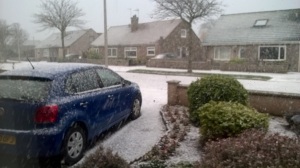




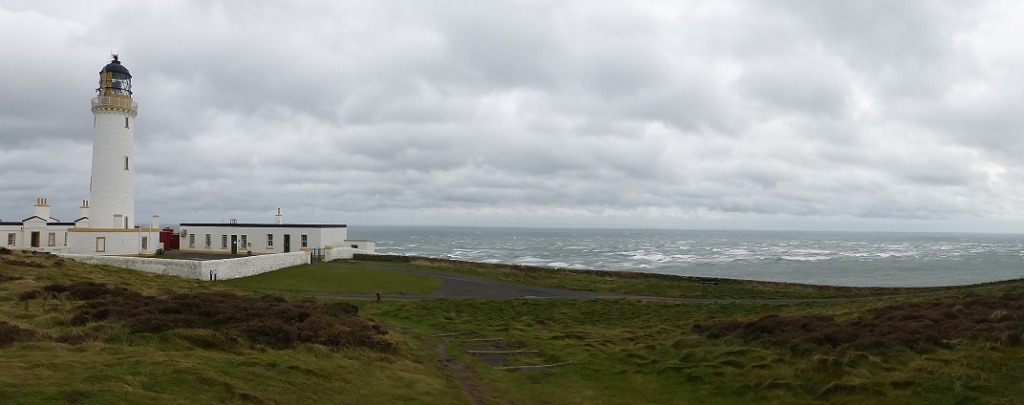


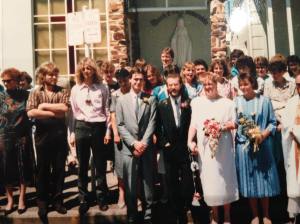

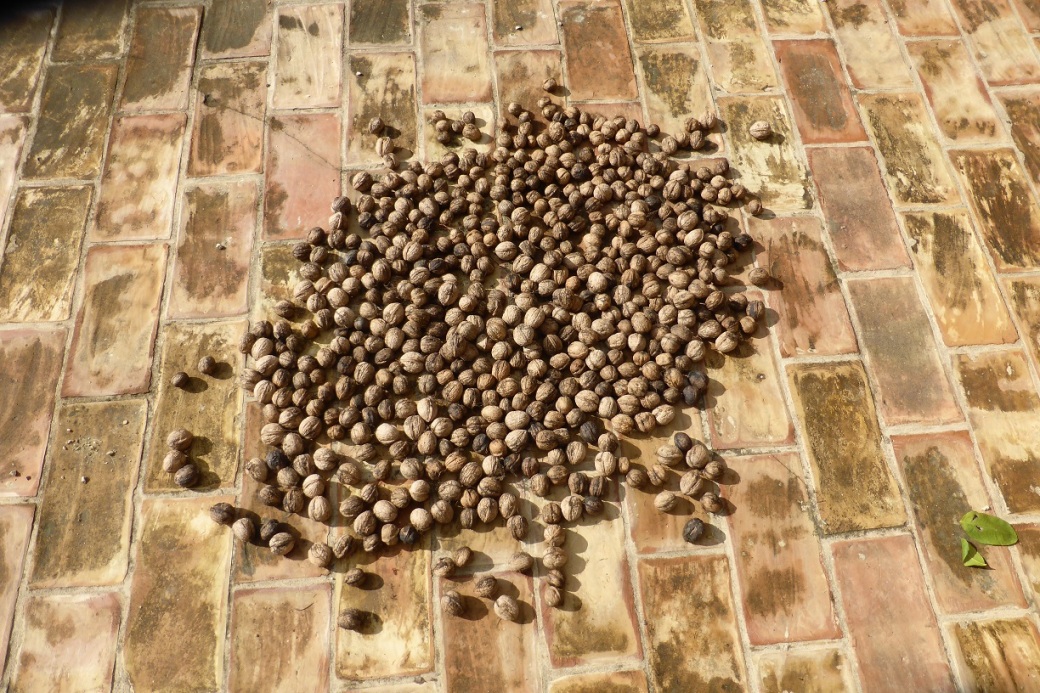






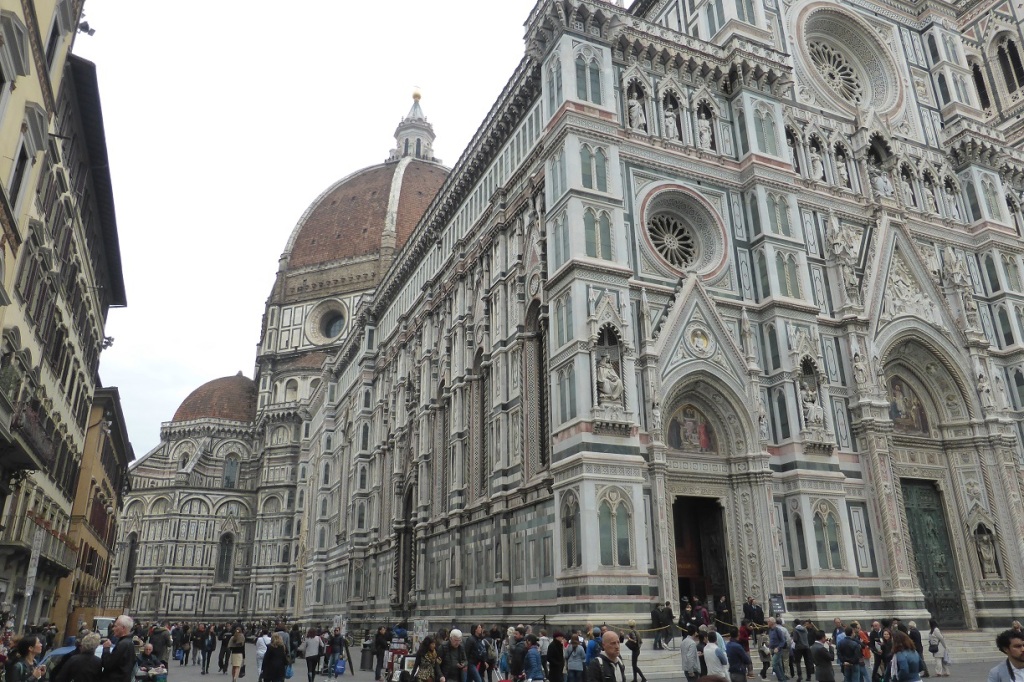


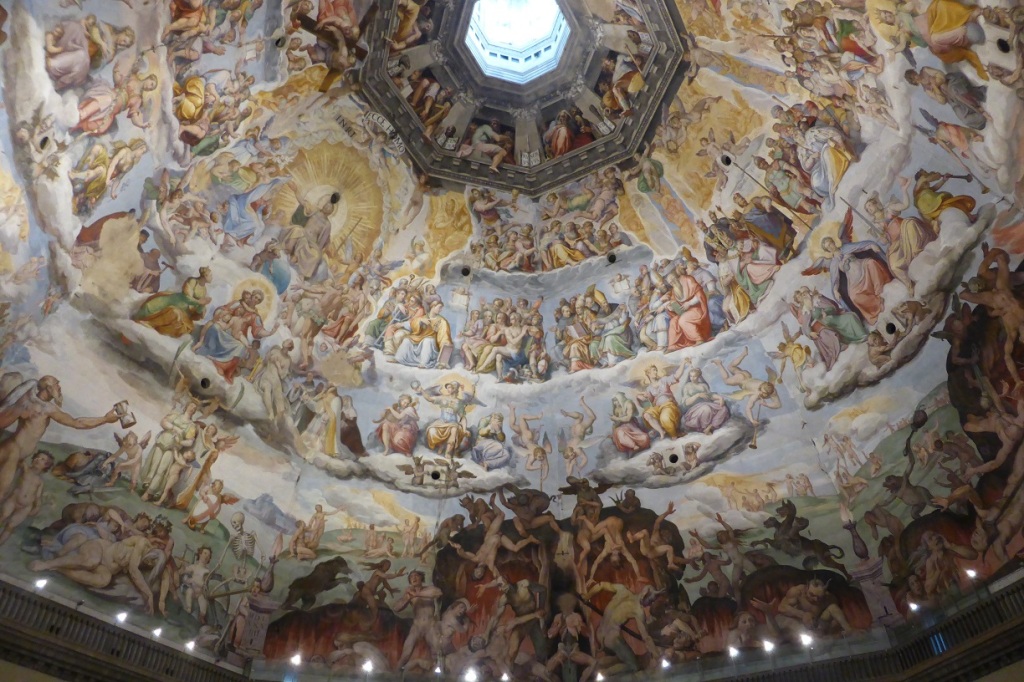
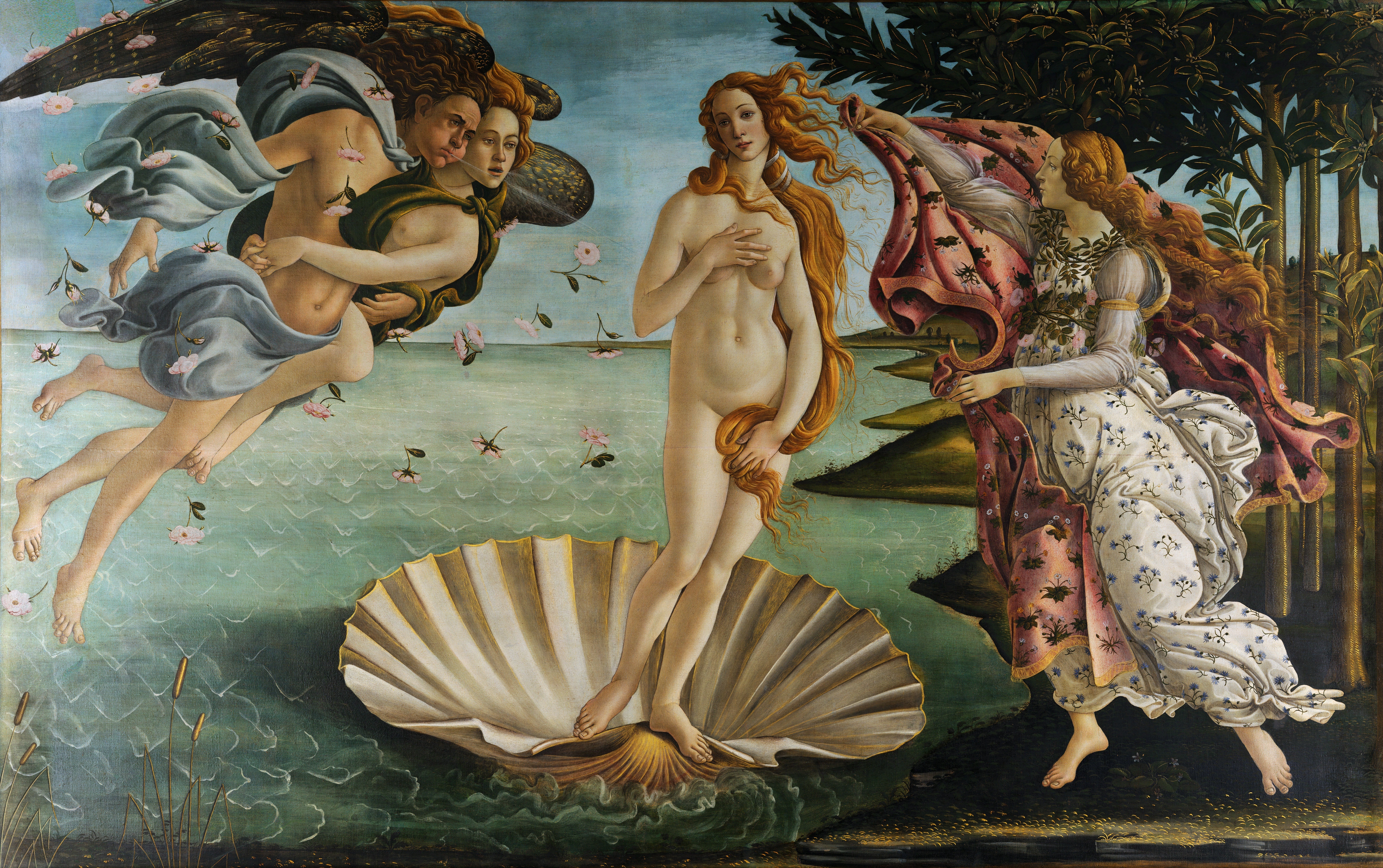 Birth of Venus, by Sandro Botticelli.
Birth of Venus, by Sandro Botticelli.